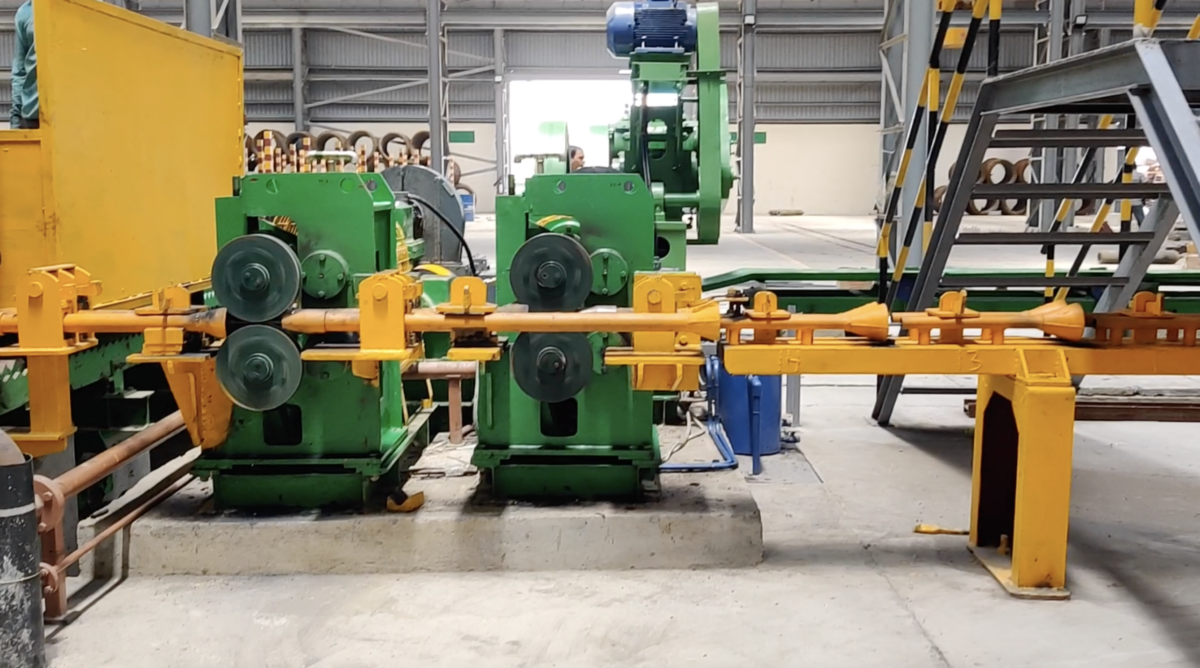When we talk about pinch rollers and their utility and operation in the steel rolling mill, the first question that often comes to mind is what exactly is a pinch roller. Today, let us take the time to learn about them and how they are used.
What is a Pinch Roller?
A pinch roller in a steel rolling mill is a vital element and machinery that facilitates hot rolling. They function on a horizontal cantilever structure with an air cylinder and a double roll device. This permits it to regulate the synchronous clam that moves up and down. Pinch rollers tend to have a certain opposition to the adhesion of different metals and also have an intrinsic property that allows lubrication. Their job is also to assist in eliminating coil rejection whose surface quality is not up to standard.
The metallurgical aspects of the rolls help in delivering resistance to the bond and the abrasive wear. It also aids in improving and extending the length and providing equal wear to each pinch roll utilised in the process. Overall, pinch rollers are created to provide optimal performance and can satisfy the needs of hot steel strip coiling usage.
Types of Pinch Rollers Used in Steel Rolling Mills
1. Billets Pinch Roller
Billet pinch rollers are placed right before the roughing mill. The job of the billet pinch roller is to hold onto the rolling stock. Doing so ensures that the rolling stock maintains a specific level of tension and stable forward transportation.
2. Segmentation Pinch Roller
The segmentation pinch roller machine is positioned at the fold-out flying shear machine outlet. It can be adjusted to tilt and move the overall layout and the positioning of the upper cooling bed roller form. The arrangement is an oblique formation that includes pairs of four pinch rollers with alternating control pinch roll devices.
3. Pinch Brake Roller
The pinch brake roller is mostly utilised for the purpose of single-line rolling of the pinch and brake. It is also used before and after cutting flying feet. It is also responsible for holding back rolling stock to ensure that the rolling stock preserves a certain tension and stable transportation.
4. Swing Pinch Roller
The swing pinch roller is used for dual-motor drive form. In this case, both the lower and the upper rollers function with the assistance of AC motors via coupling. Both motors maintain their speed by utilising the same inverter. The cylinder drives the upper roller, making it move up and down. This function, in turn, controls the clamping and unclamping fiction of the workpiece.
5. Vertical Pinch Roller
The vertical pinch roller is generally used to roll the pinch in a single line. It is also employed before and after cutting flying feet. It is also responsible for controlling back rolling stock to guarantee that the rolling stock keeps a specific tension and stable transportation.
6. Tail Breakers
Tail breakers are put into position just behind the flying shear and before the cooling bed to lessen the momentum of TMT bars. It performs with AC and DC variable drives, and the pneumatic cylinder disconnects them.
7. High-Speed Pinch Roller
High-Speed pinch roller is utilised at a different location in the rolling mill before and after the TMT quenching box. It is done to supply continuous tension to the bar. It is also developed with a spherical roller bearing.
Why Depend on The Steefo Group for the Best Rolling Mill Equipment?
If you are searching for proper rolling mill equipment, look no further than The Steefo Group. We can equip you with everything your rolling mill will ever need. We have been the leading and most favoured integrated rolling mill manufacturer for nearly four decades. The Government of India also acknowledges us as the Star Export House, and we adhere to our reputation. With over 100+ establishments, we are a prominent name worldwide and in the country.
Understanding The Steefo Group’s Products
You are getting assured quality when you select products from The Steefo group. You also get your hands on the most innovative and futuristic products that will help you transform the face of your business. We specialize in a wide range of projects, from complete turnkey projects to individual modular projects, that cater to the specific needs of your business. Our product range includes pinch rollers, TMT bar rolling mills, wire rod mills, mill stands, rolling mill gearboxes, reheating furnaces, and more.
Our emphasis on technology and innovation ensures that we deliver the most up-to-date products for your rolling mill after undergoing rigorous testing and quality checks.
To learn more about the Steefo Group and our products and how we can improve your productivity and profits, contact +91 98240 76873 or drop a mail at marketing@thesteefogroup.com.

